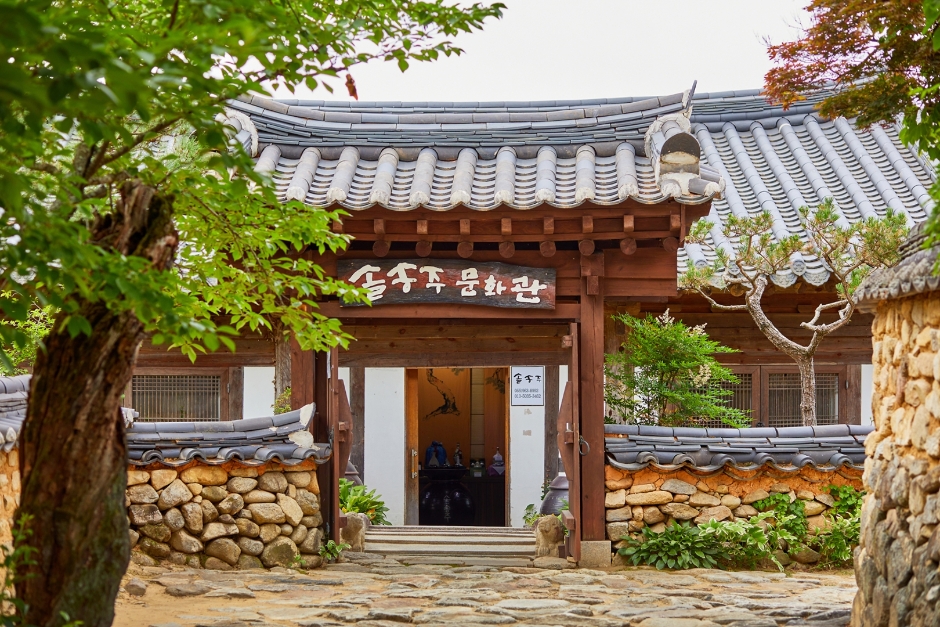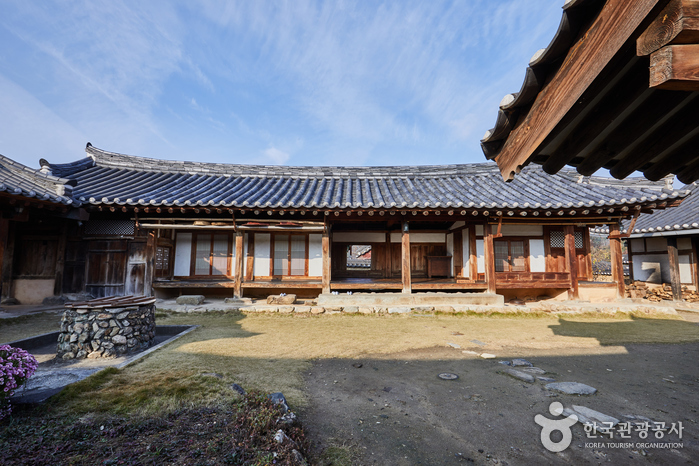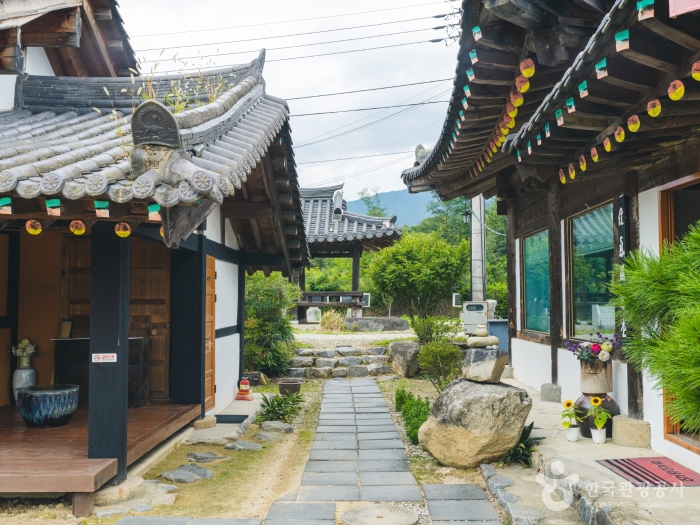Yeonhosa Temple (연호사)
19.2 Km 24433 2021-08-12
80, Jukjuk-gil, Hapcheon-gun, Gyeongsangnam-do
+82-55-931-2508
Yeonhosa Temple is located in Hapcheon-gun, Gyeongsangnam-do. With its back to Hwangusan Mountain, the temple faces the Hwanggang River. Designated as one of the Eight Great Views of Hapcheon, the temple is surrounded by mountains with a cliff on its back. The view of the gently flowing river from Hambyeongnu Pavilion is relaxing, even on rainy days when raindrops fall into the river.
Odosan Recreational Forest (오도산자연휴양림)
19.8 Km 37162 2014-08-05
398, Odosanhyuyang-ro, Bongsan-myeon, Hapcheon-gun, Gyeongsangnam-do
+82-55-930-3733
Odosan Recreational Forest is to the north of Haeinsa Temple, one of the three most important temples in Korea, and to the south of Hapcheonho Lake. The Forest’s convenience facilities include 18 Forest Cabins divided into 2 areas, a Youth Training Center that can accommodate 30 people, and 28 water playing sites. In addition, 63 camping decks are available.
Solsongju Cultural Center (솔송주문화관)
19.8 Km 1 2024-01-26
50-6 Gaepyeong-gil, Jigok-myeon, Hamyang-gun, Gyeongsangnam-do
Solsongju is a liquor distilled after steaming pine sprouts picked from the mountains around Gaepyeong Village from April to May and fermenting them with hard-boiled rice in the crude liquor. It has been introduced several times as a toast at summit dinners and international events. Solsongju Cultural Center, located at the entrance of Gaepyeong Hanok Village, is a space that informs the history and tradition of Solsongju. Park Hong-seon, an Intangible Cultural Property holder with the secret of Solsongju passed down for more than 500 years, has operated this cultural center with her husband for nearly 30 years. Visitors can experience a variety of traditional liquor, including Solsongju, made using traditional tools; Nokpaju, an herbal liquor of the Goryeo period; and Damsol, a rice soju, and you can also try tasting them. These can be consumed as is or as various cocktails. There are four types of cocktails in the cocktail-making experience: Damsol Julep, Solbaram, Damsol Tea, and Damkok.
Hamyang Ildoo Gotaek
19.9 Km 7820 2021-04-09
50-13, Gaepyeong-gil, Jigok-myeon, Hamyang-gun, Gyeongsangnam-do
+82-55-962-7077
The Old House of Ildu in Hamyang is the birthplace of Jeong Yeo-chang (1450-1504, pen-name: Ildu), a great Neo-Confucian scholar of the Joseon Dynasty. It is situated at the center of Gaepyeong Village, where many members of the Hadong Jeong clan and the Pungcheon Roh clan settled, in Jigok-myeon, Hamyang. The house is considered an invaluable historic material for studies on the architectural style of the 17th to 18th centuries and the history of the Joseon Dynasty.
The house covers a total area of 9,917m2 and consists of the haengrangchae (servants’ quarters), sarangchae (a detached building used as a reception room for male guests), jungmunganchae (middle gate building), anchae (the inner house), araechae (outhouse near the gate), gobang (storeroom), shrine, gotganchae (warehouse), and a tall gate. Upon entering the house, visitors will notice an earthen wall that divides the sarangchae, which is built on a high foundation, from the other spaces so as to prevent visitors from looking inside the women’s spaces and shrine. The house’s most distinguished feature is the sarangchae, whose role and size were expanded, unlike other hanok houses at that time. The sarangchae was built in a “ㄱ”-shaped layout and is connected to the “ㅡ”-shaped jungmunganchae. Notably, the sarangchae’s numaru (attic, upper floor) is a well-designed library that attests to the scholarly spirit of Jeong. After entering via the Ilgagmun Gate (front gate with two posts and a roof), a middle gate comes into view. After passing this gate, there is the “ㅁ”-shaped anchae, or women’s quarters, with a courtyard. Then, after passing a room of the anchae, there is the gotganchae flanked by the shrine and the an-sarangchae.
Currently, the house provides a variety of accommodation including four rooms in the haengnangchae, two rooms in the an-sarangchae, and three rooms in the sarangchae. The latter two are equipped with outside toilets. In particular, the sarangchae, as the core space of the house, offers an open view of Seokgasan Mountain from the numaru (upper floor) of the Takcheongjae Building. Although the house is designed and decorated with antique household objects, furniture and interior items, the toilets and bathrooms are modernized for guests’ convenience.
As the Old House of Ildu has been designated as National Folklore Cultural Heritage No. 186, it is maintained by the local administrative office. However, Jeong Ui-gyun, an 18th-generation descendant of Jeong Yeo-chang, lives in a house in the orchard opposite the Old House of Ildu, and comes and goes constantly. Although cooking is not possible at the house, Jeong allows guests to have a garden party or cook in his large garden next to the detached building.
Jirisan Taegojae (Jeongilpum Farm) (지리산태고재 (정일품농원))
19.9 Km 0 2024-01-08
39-2 Gaepyeong-gil, Jigok-myeon, Hamyang-gun, Gyeongsangnam-do
Located on a hill overlooking Gaepyeong Hanok Village, this place is popular as it serves as a filming location for many movies and dramas, including "Mr. Sunshine (2018)." It is a unique traditional hanok (traditional Korean house) complex with tile-roofed houses and thatched houses, presenting guests with a quiet night stay at hanok. It consists of Jeongilpum, Traditional Room, Hakseondang, and Chwiundang, with a total of 10 rooms. In particular, thatched houses are a traditional architectural form that is difficult to find elsewhere, so staying over at least once is recommended. It is also famous for its Korean table d’hote restaurant. The traditional Korean food made with seasonal ingredients is served only to in-house guests.
Gaepyeong Hanok Village (개평한옥마을)
19.9 Km 48576 2024-01-31
59 Gaepyeong-gil, Jigok-myeon, Hamyang-gun, Gyeongsangnam-do
Gaepyeong Hanok Village is where more than 60 large and small hanok (traditional Korean house) buildings with over 100 years of history are located within a traditional atmosphere. The village was named Gaepyeong using the letter gae (meaning “stuck between") as it is situated between Deokgaecheon Stream and Silgaecheon Stream. Visitors can observe the typical form of Gyeongsang region's yangban (aristocrat) house in this village, known as the hometown of scholars and writers since ancient times. The historical House of Ildu, which stands out first when entering Jigok-myeon where Gaepyeong Hanok Village is located, was also used as a filming location for dramas such as "Mr. Sunshine (2018)" and "Toji, the Land (2004)." The scenery of the stone walls, in harmony with the antique hanok, offers a calming sensation. In addition, visitors can participate in various experience programs, such as pressed flower craft, dasik (tea confectionery) making, and walking on trails held throughout the village, as well as gochujang (red chili paste) making at Roh's Old House of Gaepyeong-ri, which has the oldest anchae (women’s quarters) in the village.




 English
English
 한국어
한국어 日本語
日本語 中文(简体)
中文(简体) Deutsch
Deutsch Français
Français Español
Español Русский
Русский